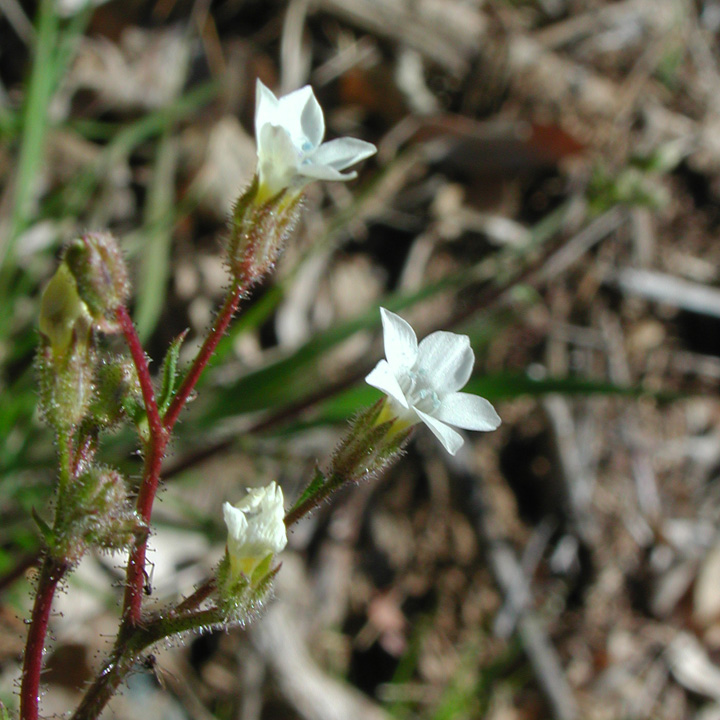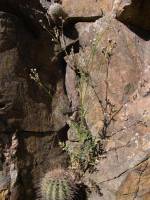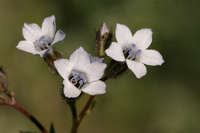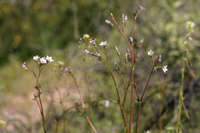|
|
|
|
Family: Polemoniaceae
star gilia
|
PLANT: Annual 7-70 cm tall, simple to branched; stems densely pubescent below, the hairs bent to curled and sometimes branched, glandular above. INFLORESCENCE: open, with 2-8 pedicelled flowers on the distal branches. FLOWER: calyx 3-5 mm long, pubescent or glandular, the lobes acuminate; corolla funnelform, 6-10 mm long, white, the tube usually 2 times the calyx, the throat yellow with purple spots; stamens inserted on the upper throat; anthers slightly exserted; stigmas located slightly above the anthers. LEAVES: pubescent with curled hairs, reduced above the basal rosette; basal and lower deeply lobed once or twice; cauline deeply lobed to entire. CAPSULE: 5-7 MM long, broadly ovoid. 2n=18. NOTES: Sandy washes, slopes, desert shrublands and woodlands, Oak shrublands at higher elevations; Graham, La Paz, Maricopa, Mohave, Pima, Pinal, Yavapai, Yuma cos; 300-1300 m (1000-4200 ft); Mar-May; s CA to sw UT, s to n Mex. REFERENCES: Dieter H. Wilken and J. Mark Porter, 2005, Vascular Plants of Arizona: Polemoniaceae. CANOTIA 1: 1-37. Jepson 1993, Wiggins 1964 Duration: Annual Nativity: Native Lifeform: Forb/Herb General: Erect annual with stout stems, to 40 cm tall, simple or branching from the base, lower leaves and stems faintly hoary with short, white, genticulate hairs, upper stems and leaves with shorter, glandular hairs. Leaves: Basal leaves bipinnate, 2-10 cm long, lobes rounded with 2-7 apiculate teeth, upper leaves shorter and less dissected. Flowers: Pale blue to white, with a ring of purple spots in the throat, corolla funnelform with acuminate lobes, the lobes as long or longer than the corolla throat, flowers borne singly on glandular pedicels, calyx pubescent with glandular or genticulate hairs, stamens inserted. Fruits: Capsules subglobose, 5-7 mm long, dehiscing between 3 valves running from the top to the middle of the capsule, seeds 5-10 in each cell, mucilaginous. Ecology: Found in washes and on slopes in lower desert regions, below 6,000 ft (1700 m); flowering March-May. Notes: One of the taller Gilia species. Ethnobotany: Unknown Etymology: Gilia is named for Filippo Luigi Gilii (1756-1821) an Italian naturalist, while stellata means stellate or with star like spreading hairs. Synonyms: None Editor: LCrumbacher, 2011 |





